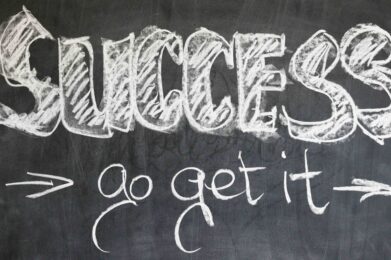What is Recruitment?
Recruitment is the process of attracting, selecting, and hiring the most suitable candidates to fill job vacancies within an organization. It involves a series of steps that ensure the right fit between the candidate and the company. A successful recruitment process not only focuses on technical skills but also ensures the candidate aligns with the company’s values and culture.
Recruitment is more than just filling a position; it’s about finding individuals who will contribute to the long-term vision and success of the company. You can read more about the role and impact of executive recruitment to understand how this can be applied to your business needs.
What is the Importance of Hiring Top Talent?
At the core of every thriving business is its team. Hiring top talent is crucial because it drives productivity, innovation, and growth. The right team members bring the skills, creativity, and motivation needed to help the company reach its goals. If you are wondering when is the right time to hire, this article offers insights into the best timing to grow your team.
In today’s competitive market, attracting high-quality candidates is more challenging than ever. Candidates are not only looking for competitive salaries but also for companies with strong values and a positive work environment. That’s why having a strong recruitment strategy is essential—it ensures that you attract the best candidates who will fit both the role and the company’s culture.
What are the Steps to Successful Recruitment?
Now, let’s dive into the three key steps to ensure a successful recruitment process: crafting the perfect job description, conducting effective interviews, and providing comprehensive onboarding and training.
1. Crafting the Perfect Job Description
Your job description is the first impression candidates will have of your company, so make it count. Here’s how:
- Detail Beyond Hard Skills: Don’t just list the technical skills and experience required. Highlight the personality traits and soft skills essential for the role, such as organization, systems thinking, and attention to detail. For example, instead of merely stating “must have five years of experience in marketing,” specify qualities like “must demonstrate strong organizational skills and the ability to think strategically.”
- Share Your Vision: Include information about your company’s mission and values. Younger generations are particularly interested in what a company stands for, often placing this above salary considerations. For instance, if your company is committed to sustainability, make sure to highlight this in the job description.
A well-rounded job description not only attracts the right candidates but also sets clear expectations from the outset.
2. Conducting Effective Interviews
A structured interview process helps in identifying the best candidates. Here’s a step-by-step approach:
Phone Screening
- Resume Review: Look for inconsistencies or gaps in the resume. Make notes of areas that need clarification, such as unexplained job changes or employment gaps. This is also the stage to assess the candidate’s communication skills and overall fit for the role. To ensure your recruitment process remains efficient and scalable, it’s essential to use tools that help streamline tasks like resume screening. Implementing advanced software can significantly reduce time spent manually reviewing resumes. For the latest tools available, check out this 10 Best Resume Screening Software of 2024. These tools are designed to help you automate the screening process and identify top candidates faster.
- Preliminary Fit: At this stage, I like to rate and rank each candidate based on what I see on their resume. This helps me to focus on the top contenders and then I do phone screening based on their rating. Use a scoring system that takes into account both technical skills and potential soft skills fit. Here’s a free interview scoring system template that you can use in your next interview
In-Person Interview
- Focus on Soft Skills: Since the resume covers most of the hard skills, I like to use the interview to assess a candidate’s personality, values, and future goals. Tailor your questions to probe these areas effectively. For example, you may ask an open ended question like, “what type of person do you think will be successful in this role?”
- Behavioral Questions: These are key to understanding how a candidate handles real-world scenarios. For instance, you might ask, “Can you describe a time when you had to manage multiple deadlines? How did you ensure success?” These questions help reveal a candidate’s problem-solving abilities, teamwork, and adaptability.
- Tailored Questions: Every candidate is unique, so tailor your questions based on their experience. You may want to look through the past experience listed on their resume and use that as the background to ask about specific challenges and successes they encountered.
Second Interviews
If you have a lot of candidates that are good or are on the fence about some of them, then feel free to bring them in for a 2nd interview. If it’s an important hire, I almost always will do a 2nd interview.
- For the 2nd interview, I would recommend changing up the interview environment because it can reveal different facets of a candidate’s personality. Consider a coffee shop, restaurant, or even a walk for the second round. This approach can help you see how the candidate behaves in less formal settings and assess their interpersonal skills and adaptability.
- Team Involvement: If possible, involve team members in the second interview to get their input on the candidate’s fit within the team dynamic. This can provide valuable insights and ensure a well-rounded assessment.
3. Onboarding and Training
The journey doesn’t end with hiring; successful onboarding is crucial to set your new hire up for success. Here’s some things to keep in mind.
- Structured Onboarding Plan: Outline a clear plan detailing what the new hire will learn in the first weeks. This should include meeting colleagues, understanding workflows, and getting comfortable in their new role. A detailed onboarding plan might include a schedule of training sessions, introductions to key team members, and a walkthrough of important processes and systems.
- Regular Check-Ins: Frequent touchpoints show that you care about their progress and provide opportunities to correct any misunderstandings early on. This is particularly important during the probation period, typically the first 90 days. Regular check-ins also help build a rapport with the new hire, fostering a sense of belonging and engagement.
- Support for Success: Ensure new hires have all the resources and training they need to excel. This could include providing access to necessary software, assigning a mentor or buddy, and offering continuous learning opportunities. Remember, a well-supported employee ramps up faster and contributes more effectively to the team.
- Feedback Mechanism: Create a system for new hires to give feedback on their onboarding experience. This can help you identify areas for improvement and show new employees that their input is valued.
Final Thoughts
Recruiting and onboarding are significant investments. By following these steps, you not only attract the best talent but also ensure they thrive within your organization. Remember, the goal is not just to fill a position, but to build the dream team that embodies your company’s values and drives its success.
A comprehensive recruiting strategy that includes detailed job descriptions, structured interviews, and effective onboarding processes will set the foundation for your company’s growth and success. Investing in your hiring process is investing in the future of your business.
If you are in the process of making an important hire, and don’t know how to do it, then reach out to me and I can help eliminate the risk of recruiting for that all important team members.




